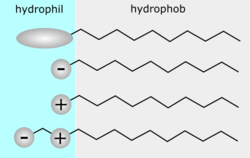 Active fillers
Active fillers
The most popular and very effective builder is tripolyphosphate, being replaced now, due to the pro-ecological legislation of many countries, by other builder systems. A builder system consisting of zeolite A is predominantly used in non-phosphate detergents. (15-25%), sodium carbonate (5-15%) and polycarboxylates (2-5%). The mechanism of action of this system is slightly different than in the case of phosphate fillers.
Phosphate powders, in relation to non-phosphate, have greater washing capacity, especially at low concentrations of powder in the wash liquor. Their disadvantage is the deposition of sparingly soluble substances on the fabric, so-called. incrustation, and on components of the washing machine in the case of, when the concentration of the powder in the water is low.
So remember when using phosphate powders, to use an amount not less, than recommended by the manufacturer. At higher concentrations of phosphate powder in the wash liquor, the phenomenon of encrustation is significantly reduced.
In the case of phosphate-free powders, the phenomenon of incrustation at low concentrations of the powder in water is small, while the detergency under these conditions is lower than that of phosphate powders. The low level of encrustation at different concentrations of zeolite A-based phosphate-free powders is a particularly favorable phenomenon, Due to the general trend among consumers to the maximum saving of powder and environment.
Zeolites are constantly improved and properly selected in view of their harmlessness to the environment, biodegradable, as well as the impact on humans. An effective active filler causes, that the fabric is bright after washing and maintains vivid colors. Work on the improvement of zeolites boils down to improving the performance of the zeolite itself and the introduction of new substances, which actively cooperate with the zeolite, supporting its operation.
The new solutions include the introduction of zeolite P, SKS-6 layered silicates and work on the use of polyaspartic acid as a biodegradable filler. Zeolites are also incorporated into liquids.